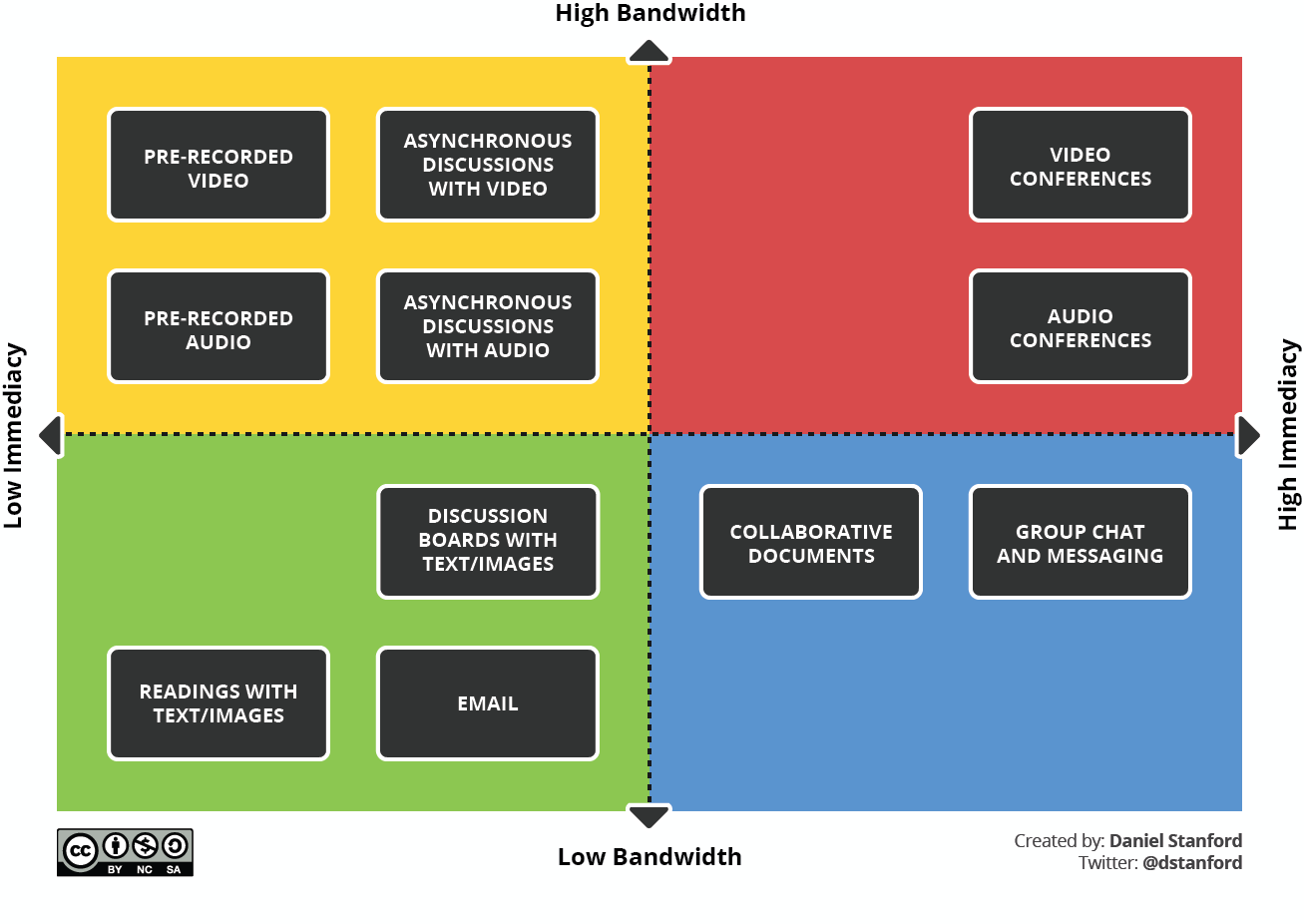Alternatives to Zoom: A Series

This post is the first in a series on alternatives to live video sessions with students.
At this point it seems everyone has likely spent an inordinate amount of time communicating with colleagues near and far about what in the world we all will be doing in the coming weeks…at least those of us who have found the time amid the many tasks required to support our friends and family members. Early on, I know that many of us quickly discussed ways to deliver our classes synchronously (via Zoom, Webex, or any other number of tools). The good news is that there are several valuable strategies for doing so effectively. However, there are also a lot of additional complications with synchronous sessions that might not be evident at first glance. Two that come to mind:
- Live video sessions don’t always run as smoothly as we think they might. Even if we regularly participate in video calls with friends and colleagues, few of us have extensive experience facilitating our classes via video conference. This is also true for many of our students. The normative behaviors (some good, some bad) that have been socialized over years of face-to-face instruction aren’t familiar to us online. As a result, even questions as simple as, “How do I initiate participation?” are not always intuitive. In the absence of planning and practice, these sessions can sometimes fall flat.
- Live video sessions also require a lot of bandwidth. Both literally (i.e. they need a stronger internet connection to function smoothly) and figuratively (it can be a real challenge to keep track of video, audio, chat, digital handraises, and breakout rooms while facilitating learning).
To that end, and with an eye towards maintaining a human-centered (rather than tool-centered) approach to our remote teaching, the next few posts are going to reference some valuable asynchronous strategies: Teaching via email; Teaching via Google Docs; and Asynchronous strategies in Canvas. There are many techniques for minimizing the transactional (or relational) distance in remote learning environments to maintain a relative closeness among instructors, students, and each other (see also: Six High-Touch Processes for Improving Student Learning in Online Classes).
Take a look at Barry Trachtenberg’s Lessons from a Veteran, then keep an eye out for the next few posts designed to explore pared-down strategies for remote teaching.
Subscribe
Receive CAT remote teaching updates in your inbox.

